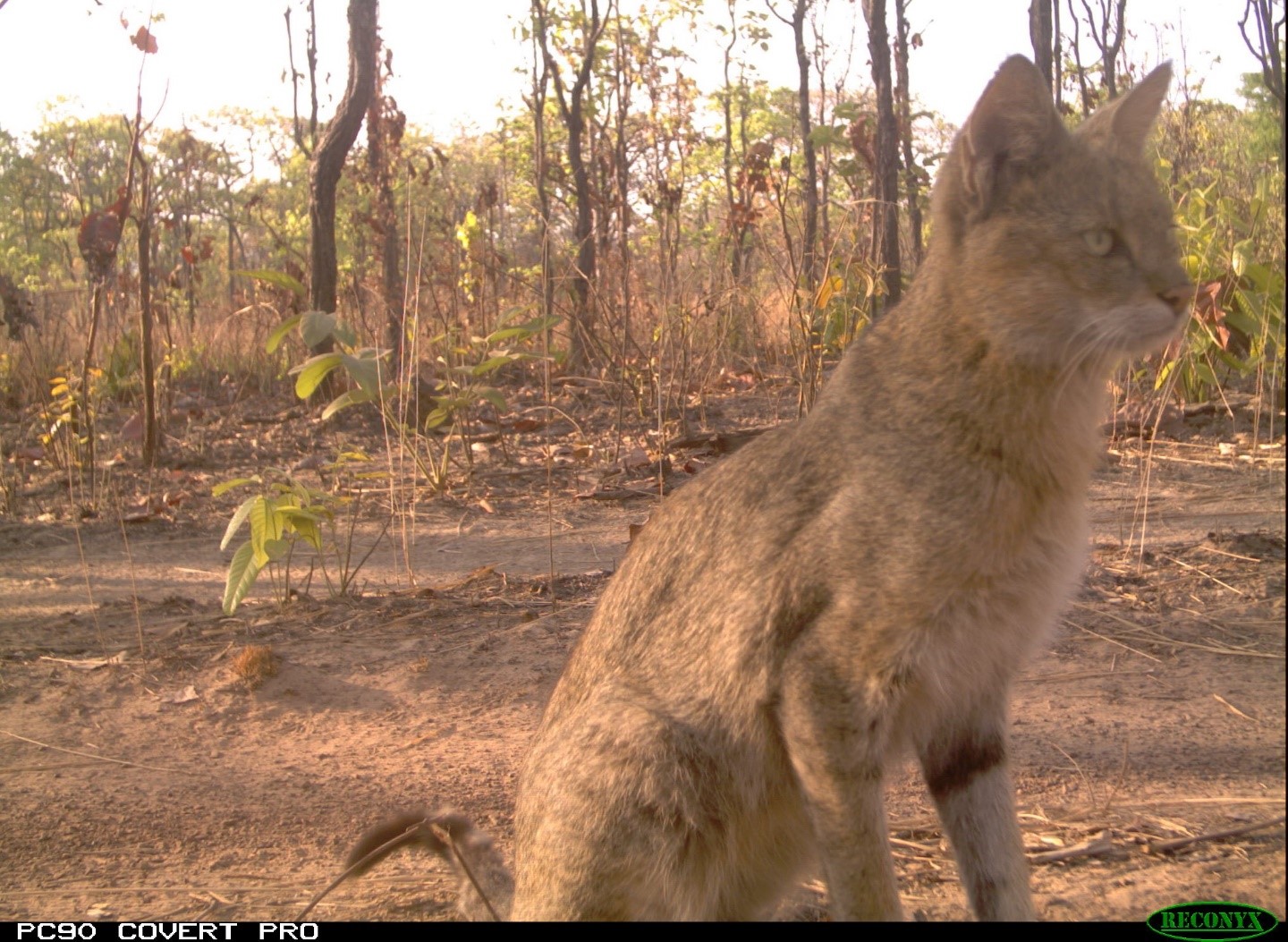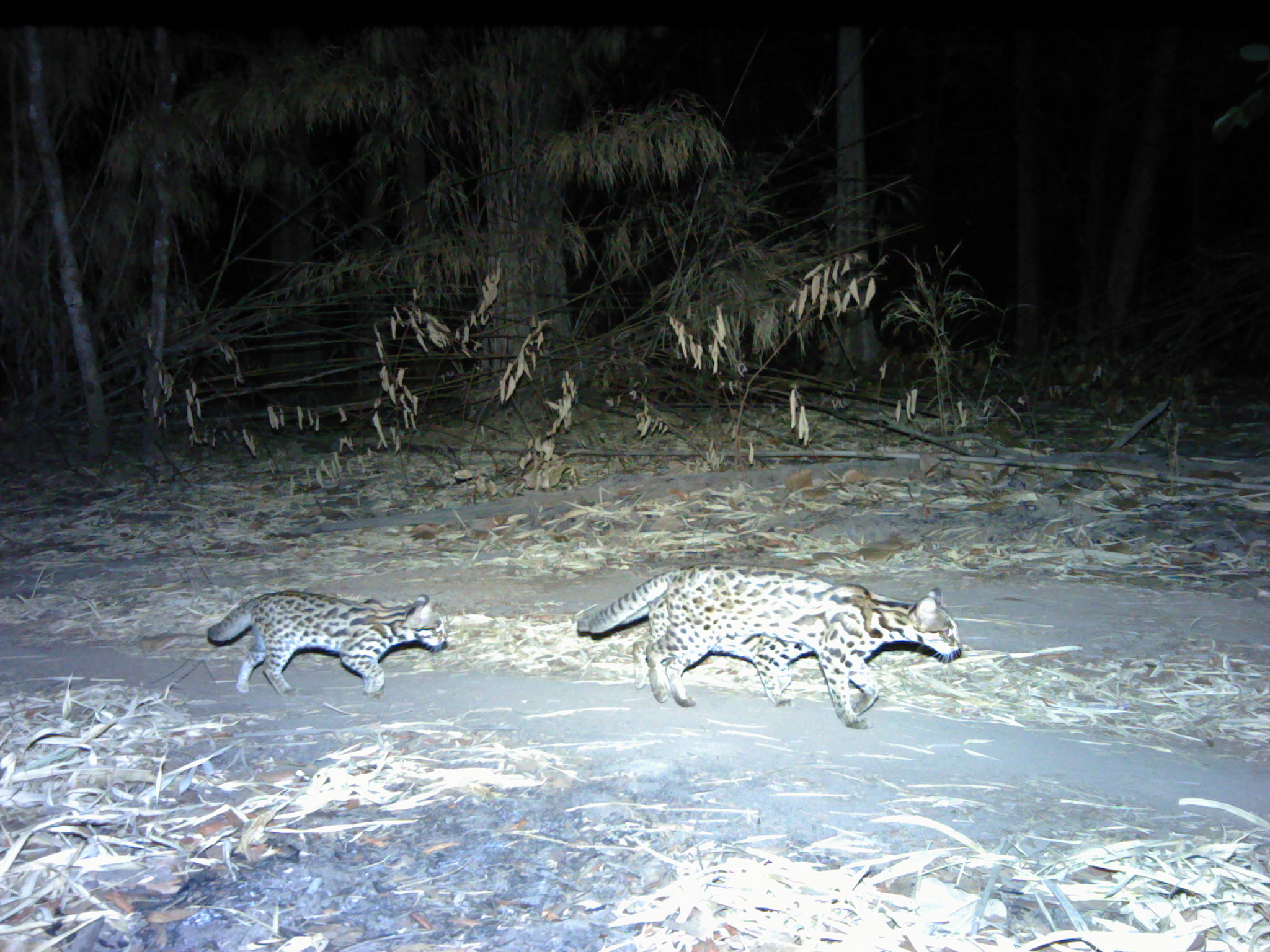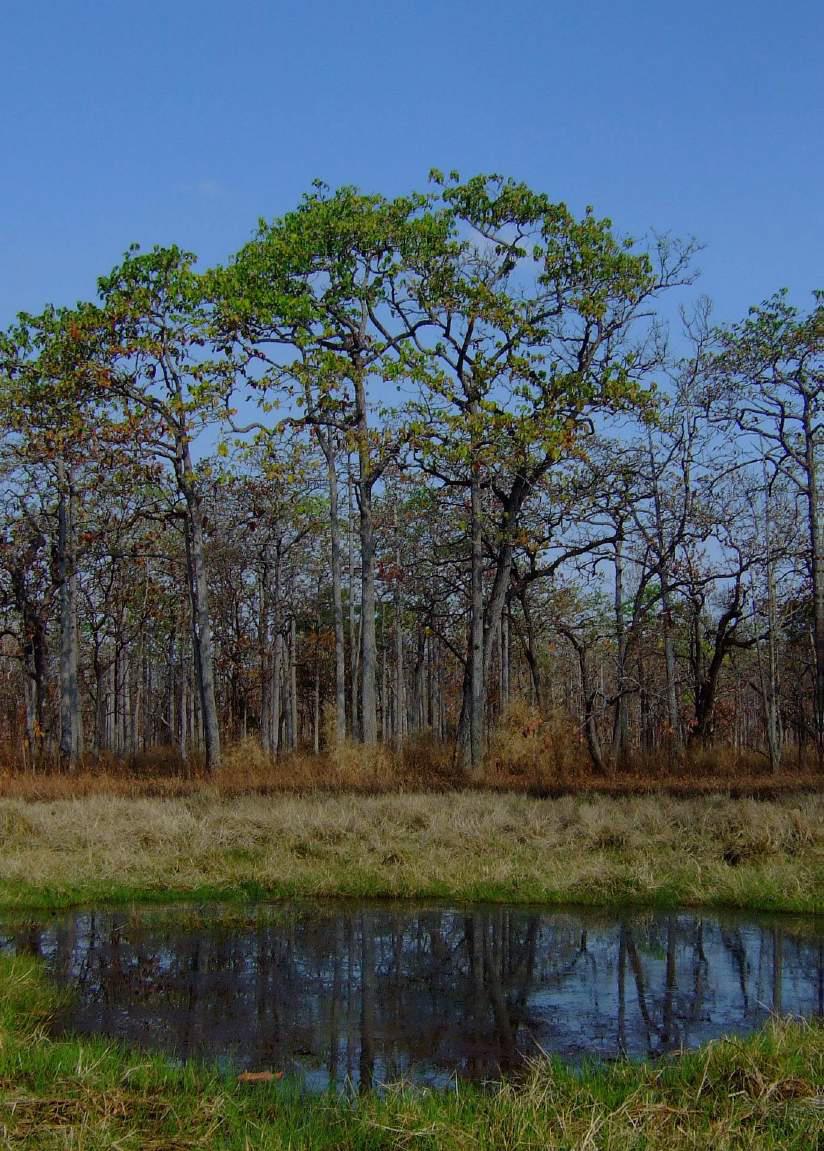News
Small cats in big trouble? Jungle cats and leopard cats in threatened forests of Cambodia
Southeast Asia is well known for being one of the most important biodiversity and endemism hotspots worldwide. However, this region is facing some of the highest anthropogenic pressures in the world, which are pushing it into a conservation crisis. The wildlife in Southeast Asia has been considerably understudied which, alongside the rapid drivers of species loss, make protecting biodiversity highly challenging. The open dry deciduous forests (DDF) of Southeast Asia cover about 15-20% of the region, and support globally irreplaceable species, including several classified as threatened. Unlike evergreen forests which dominate the region, DDF are characterized by an open canopy and abundant grassland, with a harsh dry season that includes annual fires, that substantially decrease small vertebrate prey, and the drying up of most water sources. The DDF now are the most threatened of all forest types of the region, but despite their conservation relevance there has been little research on wildlife species in this habitat. Of four felid species occupying DDF, only one appears to be a DDF specialist in Southeast Asia: the jungle cat Felis chaus. Relatively common in India and southwestern Asia, this tawny medium-sized cat appears to have suffered drastic declines in Southeast Asia. The pervasive indiscriminate snaring in the region, and habitat modification within DDF landscapes, is thought to have pushed the jungle cat to now occur only in small and isolated populations, making it one of the rarest felids in mainland Southeast Asia. Despite this, almost nothing is known about the ecology of the species in the region. We investigated the ecology of jungle cats in a landscape that contains one of the largest tracts of threatened DDF remaining in the region, which was also identified as the last major stronghold for jungle cats in Southeast Asia. Specifically, we worked in the Eastern Plains Landscape of Cambodia, known as the Serengeti of Asia. We used camera-trap surveys and DNA-confirmed scats to study this species and its interaction with a common smaller felid, the leopard cat Prionailurus bengalensis. We found that the diet of jungle cats was relatively diverse and consisted of mostly of small rodents, followed by squirrels, hares, birds, and reptiles. Leopard cats had a less diverse diet dominated by smaller prey, primarily small rodents – yet the diets of these species had high overlap because both cats were consuming predominantly small rodents. Although previous studies reported that jungle cats were more diurnal than other felids, we found the species was primarily nocturnal, and thus had high temporal overlap with leopard cats. It is unlikely that jungle cats were nocturnal to avoid larger carnivores (e.g., leopards Panthera pardus, dholes Cuon alpinus) because these larger species also were nocturnal in our study area. Jungle cats may have favored nocturnal activity because the camera trapping surveys were carried out during the dry season, when monthly temperatures are the highest and the grassy understory burns. Alternatively, because illegal human activity occurred primarily during the daytime, the species may have become nocturnal to avoid humans. We also found that jungle cats had low occupancy and used DDF almost exclusively, which was remarkable given that nearby evergreen forests in the area did not burn and contained a higher number of small prey. This suggests that prey abundance alone did not affect jungle cats’ habitat use, but instead the specialization for hunting in open habitats likely precluded the species from regularly using closed evergreen forests. Conversely, leopard cats were more abundant habitat generalists that used both DDF and evergreen forests, reiterating previous findings that leopard cats are behaviorally flexible habitat generalists. The larger number of rodents and lack of fires in evergreen habitat likely were responsible for the larger abundance of leopard cats on our study site. This broader habitat use by leopard cats, in conjunction with the more diverse diet and lower occupancy of jungle cats, likely facilitated the coexistence of these species.
Our study confirmed that jungle cats are DDF specialists that likely persist in low numbers due to the harsh dry-season conditions in this habitat. Although the species might be able to occur in open scrub and other secondary habitats of Southeast Asia, the anthropogenic pressures make these habitats now unusable for jungle cats, leaving DDF as the only major remaining suitable habitat for the species. Our findings suggest jungle cats might be rare not only because of poaching and limited availability of DDF, but also because of the seemingly low carrying capacity of the species in DDF likely owing to its harsh dry-season conditions. Consequently, relatively large areas of DDF will be required for the long-term conservation of this rare felid in Southeast Asia. Unfortunately, DDF is easily accessible to humans, who are increasingly causing habitat destruction and overhunting species within it. Of three recognized subspecies of jungle cats, the one that occurs in Southeast Asia Felis chaus fuvidina is the only one that is a conservation concern, thus immediate conservation action should be taken to conserve this subspecies. Based on our findings, possible strategies include conservation plans that ensure the protection of large tracts of DDF and increased law enforcement activities to reduce poaching and other illegal human activities. Only with implementation of better conservation strategies for DDF will the long-term conservation of jungle cats be feasible in Southeast Asia.
Rostro‐García, S., Kamler, J. F., Minge, C., Caragiulo, A., Crouthers, R., Groenenberg, M., … & Macdonald, D. W. (2021). Small cats in big trouble? Diet, activity, and habitat use of jungle cats and leopard cats in threatened dry deciduous forests, Cambodia. Ecology and Evolution. https://doi.org/10.1002/ece3.7316
-
 Jungle cat
Jungle cat -
 Leopard cat
Leopard cat -






